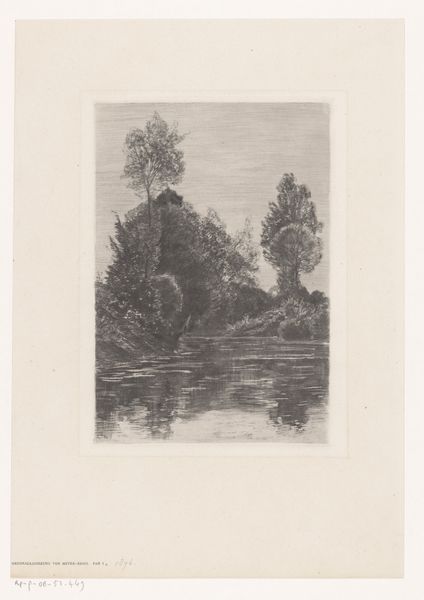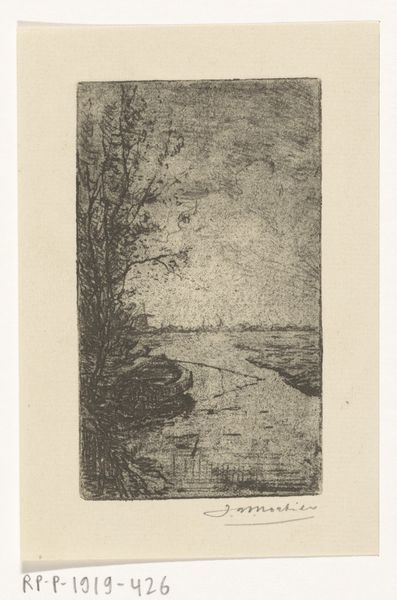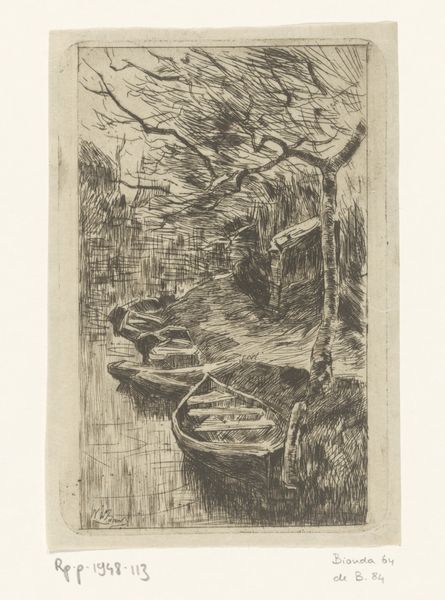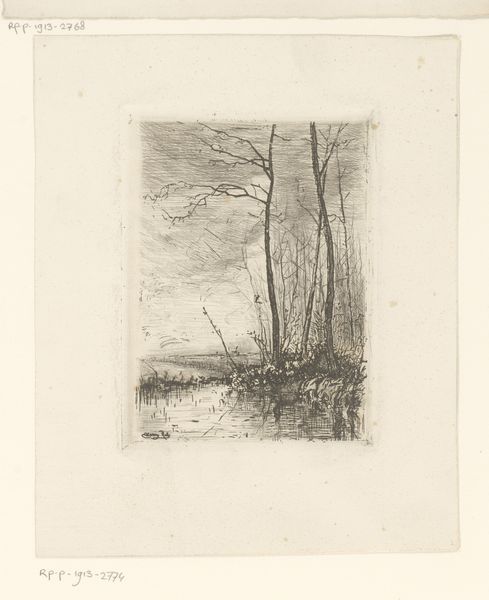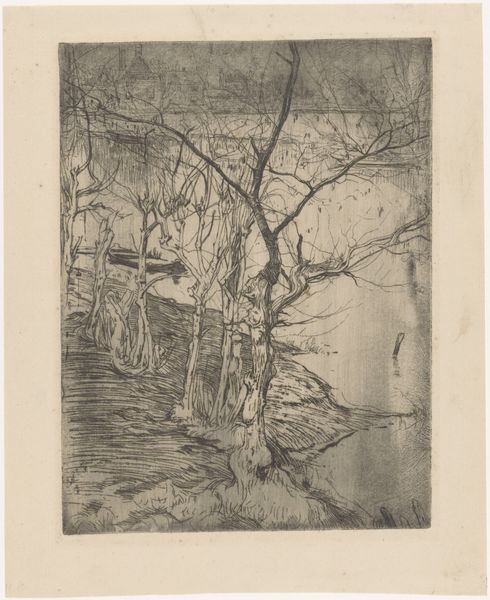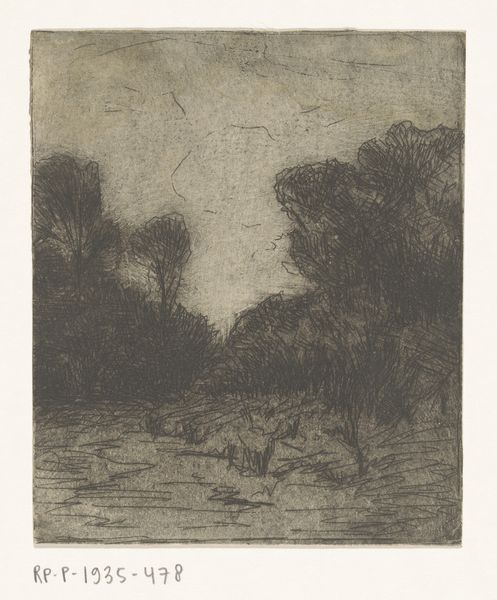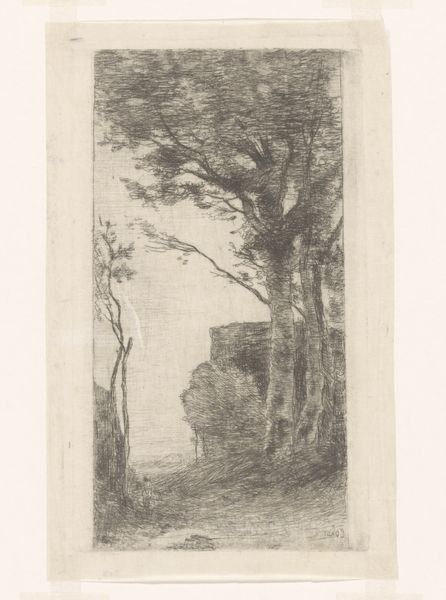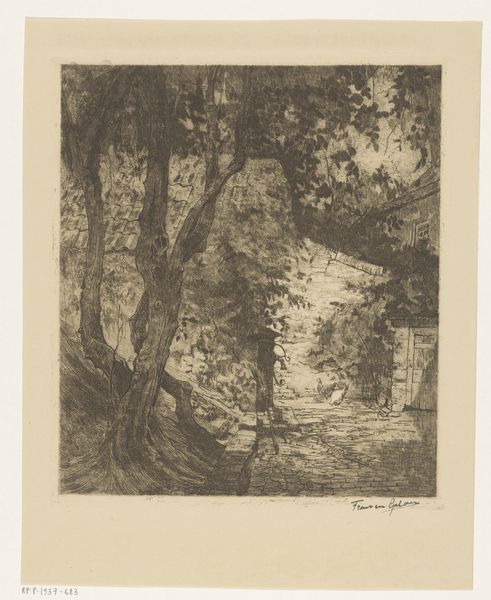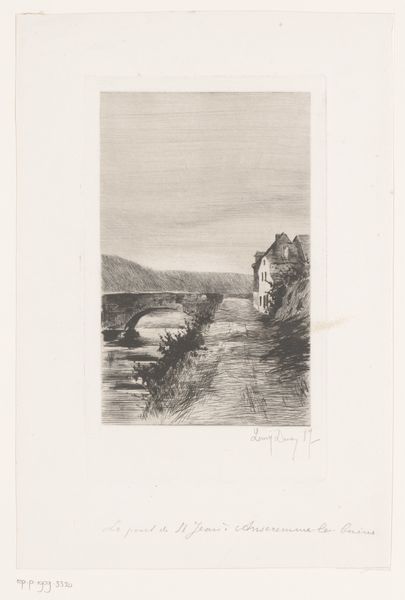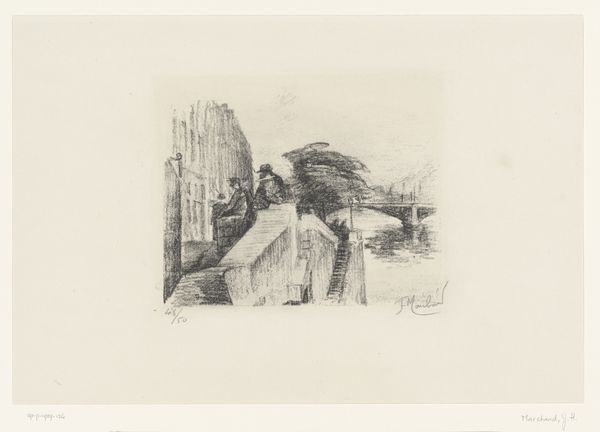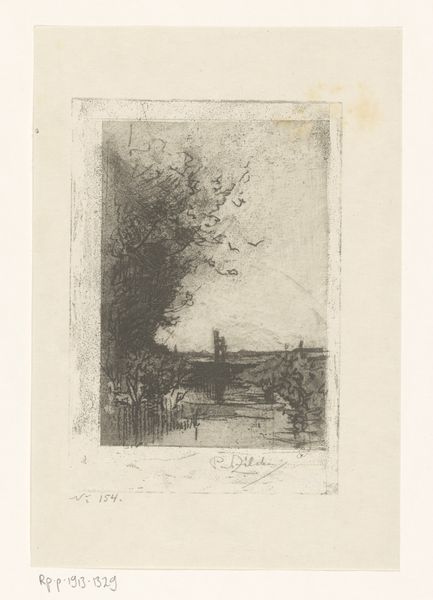
Dimensions: height 142 mm, width 109 mm
Copyright: Rijks Museum: Open Domain
Philip Zilcken made this print using etching, a process that involves drawing into a prepared metal plate with a sharp needle. The plate is then submerged in acid, which bites away at the exposed lines, allowing it to hold ink. Look closely, and you’ll see the dense network of lines that describe the scene. Zilcken has used the etching process to create a soft, atmospheric effect, emphasizing the subtle gradations of light and shadow. The image captures a quiet moment of rural life, with buildings reflected in the still water. Etching allowed artists to produce multiple copies of an image, making art more accessible to a wider audience. It democratized the art world, moving away from unique artworks towards broader distribution. So, while seemingly traditional, this print reflects a shift in artistic production, influenced by industrialization and a changing art market. It reminds us to consider the social and economic context of art.
Comments
No comments
Be the first to comment and join the conversation on the ultimate creative platform.
